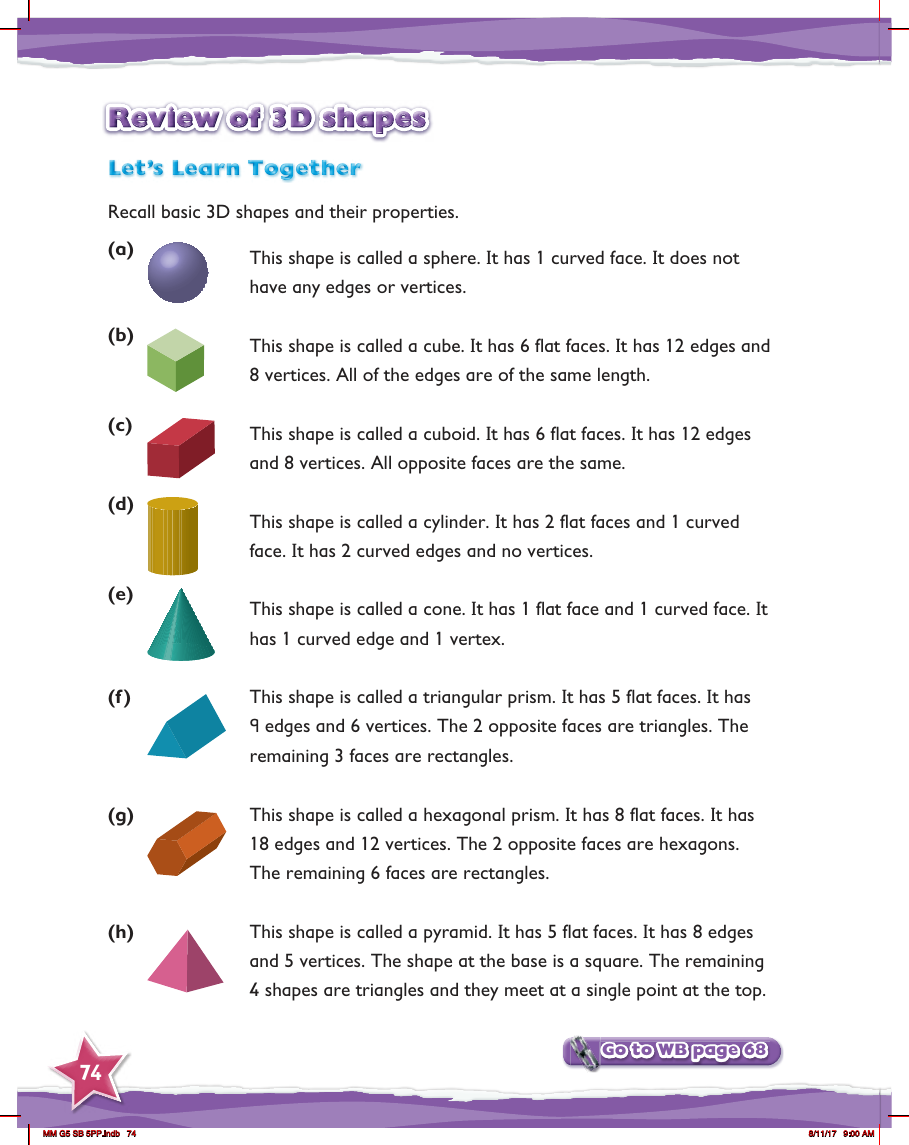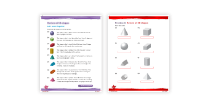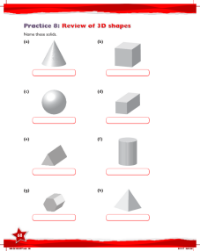Max Maths, Year 5, Learn together, Reflective and rotational symmetry in regular polygons

In a Year 5 mathematics lesson focused on reflective and rotational symmetry in regular polygons, students start by reviewing the properties of basic 3D shapes. The lesson begins with a recap of each shape's distinctive features. A sphere is introduced as a simple 3D shape with one continuous curved face, lacking edges and vertices. In contrast, a cube is described with six flat faces, twelve edges, and eight vertices, with all edges being equal in length. A cuboid is similar to a cube but differs in that not all edges are equal; it also has six flat faces, twelve edges, and eight vertices, with opposite faces matching each other.
The lesson continues with the cylinder, which stands out with two flat faces and one curved face, two curved edges, but no vertices. The cone is then discussed, having one flat face and one curved face, with a single curved edge and vertex. Students also learn about the triangular prism, which has five flat faces, nine edges, and six vertices, including two opposite triangular faces and three rectangular faces. A hexagonal prism is introduced with eight flat faces, eighteen edges, and twelve vertices, with two opposite hexagonal faces and six rectangular faces. Lastly, the pyramid is described with five flat faces, eight edges, and five vertices, featuring a square base and four triangular faces meeting at a single point at the top. Students are directed to their workbooks to further explore these concepts.

